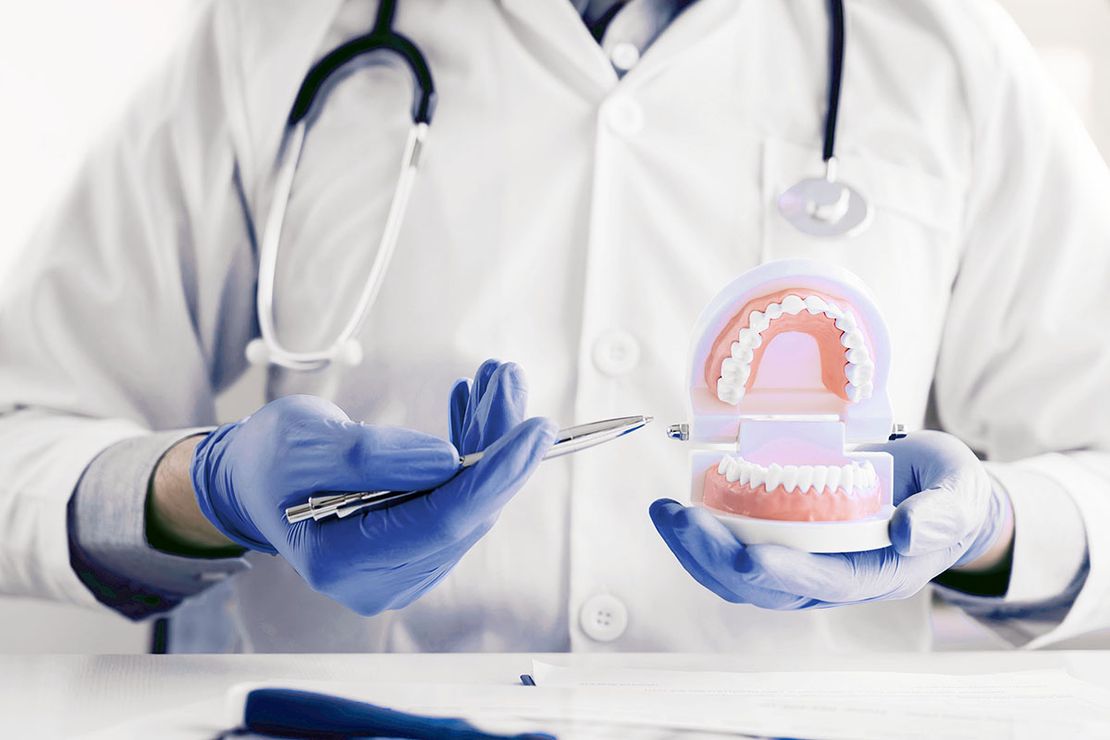Oral surgery
Tooth extraction
Tooth extraction is one of the most common services in dentistry.
Experienced dentists are usually reluctant to recommend extraction, preferring to restore the tooth, but there are cases where treatment is no longer effective, and extreme measures must be taken.
Thanks to modern anesthesia techniques, even the removal of a wisdom tooth is performed effectively and painlessly.
There are many methods of pain relief, through which an experienced dentist can eliminate sensitivity in the patient. Among these, there are several types of injection-based techniques, performed with a needle.
The dentist will carefully examine the diseased tooth, check for potential allergies, and choose the most suitable and effective anesthesia method.
How is a tooth extraction performed?
The procedure begins with anesthesia and antiseptic treatment of the surgical area.
Then, using special instruments, the dentist breaks the ligament that holds the tooth in the socket and gently starts loosening it.
After preparing the tooth, the dentist removes it and takes all necessary steps to stop any bleeding.

Wisdom tooth extraction

Diagnosis
No qualified dentist will extract a wisdom tooth "blindly." A simple external examination is not enough; X-rays are necessary to assess the tooth's development, the condition of the root system, and the degree of damage. This helps avoid potential negative consequences after the procedure.
The most comprehensive picture is obtained through radiological examination. Based on the data, the dentist can see the root positioning, their number, the direction of tooth growth, the condition of the canals, the localization of inflammation, and the presence of cysts. The X-ray allows the specialist to accurately diagnose the problem and choose the best method and strategy for extraction.
Indications for Wisdom Tooth Extraction
Wisdom tooth treatment is a complex task, and the competent dentists at GDental clinic do everything possible to preserve their health. Problems with wisdom teeth usually begin as they start to emerge: swelling, pain, fever, and discomfort while chewing. These symptoms typically subside when the tooth emerges fully and correctly.
Painless Wisdom Tooth Extraction
Fear of pain makes many patients delay seeing a doctor, tolerating discomfort, and using painkillers until the situation becomes critical. These fears are completely unfounded thanks to modern dentistry advancements.
Almost all procedures are performed by the dentist using effective and safe anesthetics. The medications begin working just a few minutes after administration. The specialists at GDental clinics do everything to ensure patients feel no pain, experience minimal discomfort, and still receive qualified care.
Wisdom tooth extraction is usually performed under local anesthesia, and in some cases, when indicated, general anesthesia may be used.
of our dental family.
Sinus Lift – A 21st Century Technology!
Sinus lift is a procedure for raising the floor of the maxillary sinus and augmenting the bone tissue.
In some cases, due to anatomical features or bone atrophy, placing an implant in the upper jaw becomes impossible.
If there is insufficient bone volume, the implant cannot be securely fixed in the bone, so in such cases, the dentists at the GDental Center resort to sinus lift surgery.
What are the causes of bone atrophy?
This can be due to the anatomical structure of the jaw, where the floor of the maxillary sinus is positioned too low in relation to the oral cavity. Additionally, bone volume reduction is often caused by age-related changes.
Finally, if a significant amount of time has passed after tooth extraction, the bone tissue may have atrophied due to the lack of chewing pressure on that area.
Sinus Lift: Implantation is Available to Everyone!
After a sinus lift procedure, implants can be placed either immediately or after several months once the recovery period is complete, depending on the clinical situation.
To accelerate healing, antibiotic therapy is prescribed. In some cases, swelling may occur after the surgery, but it typically subsides within a few days.
As for post-operative restrictions, they are minimal. It is recommended to avoid any physical strain, including air travel, and try to prevent cold-related illnesses.
The sinus lift makes implantation accessible to a wider range of people.
Many patients now choose implants over removable dentures, as implants allow for secure fixation of the artificial crown, providing long-term comfort without any further discomfort.

Root canals
Root canal treatment is a procedure aimed at saving a tooth with damaged internal tissue — the pulp. The pulp contains nerves, blood vessels, and connective tissue. When it becomes inflamed or decayed, the tooth may begin to hurt, and extraction might be required.
Root canal treatment is performed when the tooth can still be saved. During the procedure, the infected tissue is removed from the canals, and then the canals are filled with special materials. Root canal treatment may require several visits and demands patience from the patient, as well as proper care of the teeth afterward.
Root canal treatment is a simple and effective procedure that saves the tooth from extraction and helps maintain the natural bite. It's important to consult with experienced dentists and follow their post-procedure recommendations.


or Make an Appointment with one
of our qualified dentists?




